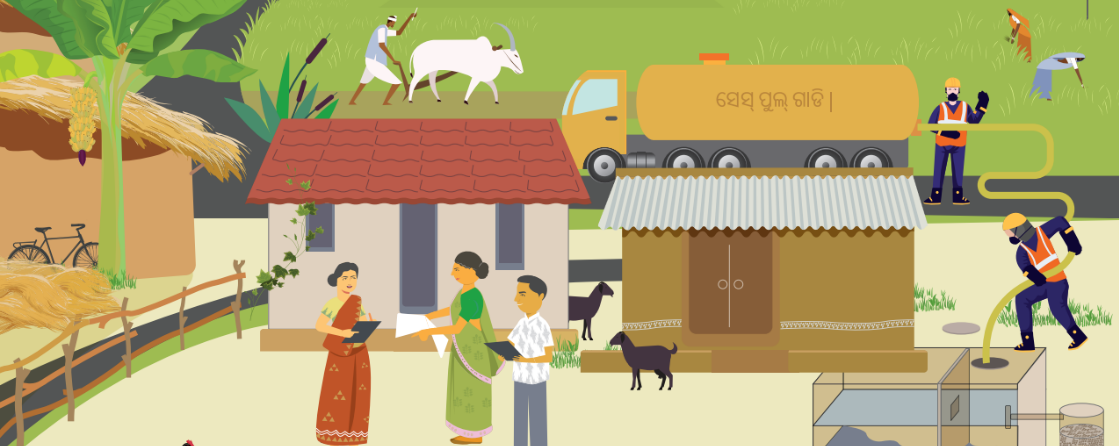India’s LED Lighting Story
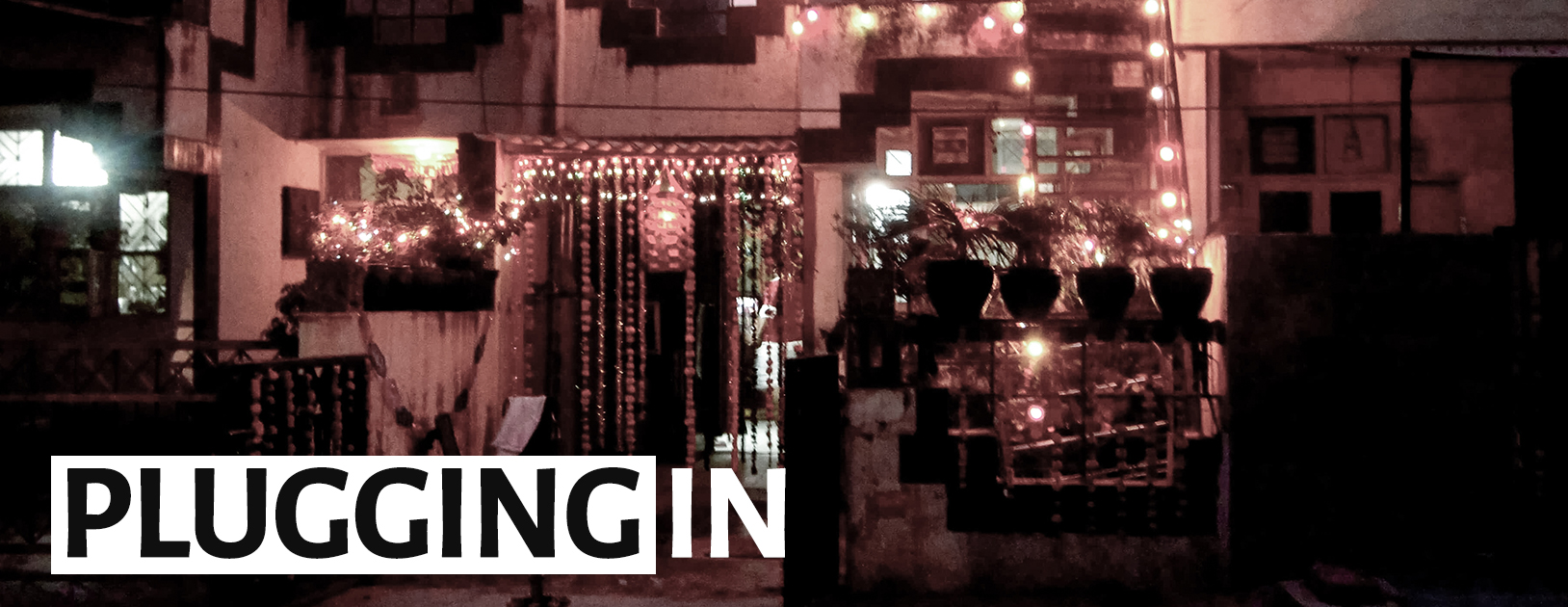
Part 3 of a blog series by the Centre for Policy Research (CPR) and Prayas (Energy Group)
The series is titled ‘Plugging in: Electricity consumption in Indian Homes’.
Lighting is the most basic use of electricity in a home. Lighting’s share in the total residential electricity consumption is estimated to be in the range of 18% to 27%. In 2013, about a billion and a half lighting devices were sold in India; half of them being incandescent bulbs followed by CFLs (31%), tube-lights (16%) and a negligible share of LED bulbs. In 2014, the government launched a programme to promote LED bulbs in Indian households and later named it UJALA (Unnat Jyoti by Affordable LEDs for All).
This is because LED bulbs consume less electricity, last longer, and does not contain mercury. The programme, arguably the world’s largest, has sold more than 27 crore LED bulbs with no subsidy from the government. How did the programme change India’s lighting industry and consumer behaviour? What part of programme design worked and what can be improved? Answers to these questions can improve future programmes designed to improve energy efficiency in India. In this post, we discuss some key findings of our recent report where we surveyed manufacturers, retailers, households, and various stakeholders to understand the impacts of UJALA.
Innovative programme
Energy Efficiency Services Ltd. (EESL), a public sector company, is responsible for implementing the UJALA programme. The company bought LED bulbs in bulk from manufacturers through multiple rounds of competitive bidding. The large volumes and assured sales incentivised the manufacturers to drop the bid price from Rs. 310 per LED bulb in the first round to as low as Rs. 38 in later rounds. EESL sold these bulbs to consumers through contract vendors in co-ordination with the local electricity distribution companies (discoms), bypassing the retail supply chain and further bringing down the final distribution price. As a result, the current price of LED bulbs under UJALA is Rs. 70, about half of the price of the LED bulbs available in the shops. Yet, there is no subsidy from the government or the discoms. EESL also conducted innovative marketing campaigns to create public awareness.
LED bulb sales are up and prices down
The UJALA programme transformed the LED lighting industry in India. Demand for LED bulbs has gone up 50 times in the three years since 2014, while the retail market price (for bulbs sold beyond UJALA) has dropped to a third. The fall in prices can be attributed to the economies of scale achieved due to substantial demand creation by the UJALA programme, in tandem with the global trend of reduction in prices of the LED chips. India’s LED bulb manufacturing capacity has also grown substantially, with about 176 registered manufacturing units in India.
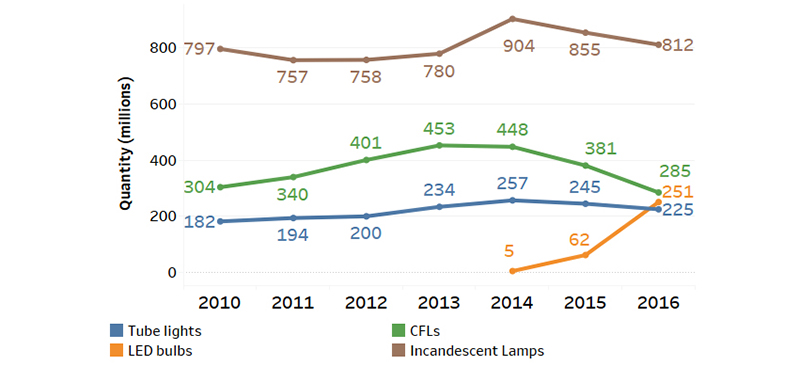
Figure 1: Sales trends of lighting devices in India
Source: ELCOMA
Our surveys show that LED bulbs are now a major source of lighting for the households that participated in the UJALA programme (Figure 2). Most of the households also said that they would buy a new LED bulb from the market when the installed LED bulb reached the end of its useful life.
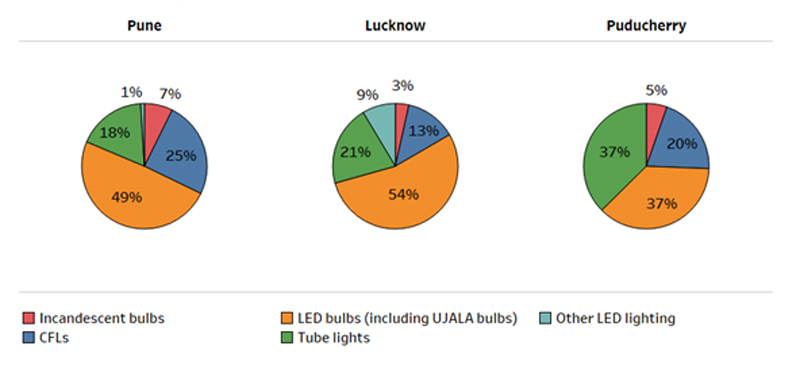
ncandescent bulbs are still around
The increased demand for LED bulbs seems to replace the demand for CFLs instead of incandescent bulbs. About 810 million incandescent bulbs were sold in 2016, a 5% drop over previous year’s sale whereas the sales of CFLs have dropped by a third since their peak in 2013 (Figure 1). Our surveys corroborate this trend as we find that a considerably large proportion of the UJALA LED bulbs were used to replace CFLs, followed by incandescent bulbs and tube lights (Figure 3).
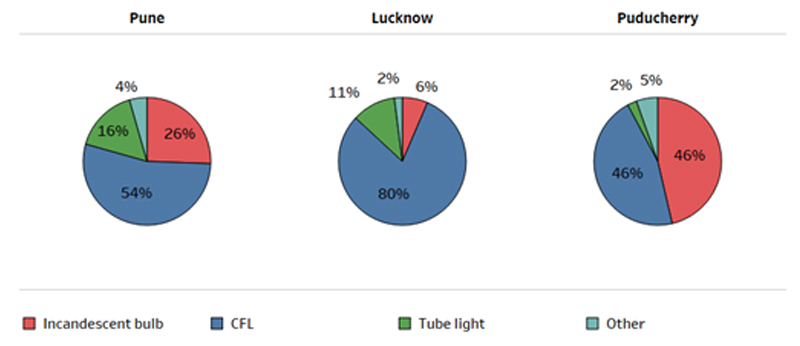
Figure 3: Lighting options replaced by LED bulbs bought under UJALA for surveyed households
Source: Prayas Consumer survey (January – March 2017)
The more that people replace CFLs with LEDs, the lesser the saving that are actually realized. Our sample of households in Pune was distributed across different income classes. A typical LED bulb saved 2.5 times more in a low income household compared to a high income household. This makes a case for programme to focus more on low income households.
LED bulb quality and warranty is important
Our surveys found that 2% of LED bulbs failed in Pune after a year of launch of the programme, while 14% of the LED bulbs failed in Puducherry three years after the launch. The bulbs sold in Pune carried a warranty of 3 years while the bulbs sold in Puducherry carried a warranty of 8 years. However, very few households got their faulty bulbs replaced. Lower expectations from a government programme and higher tolerance levels for faults in low cost LED bulbs, ignorance about warranty, and hassles in the process were cited as reasons for not replacing the faulty bulbs under warranty.
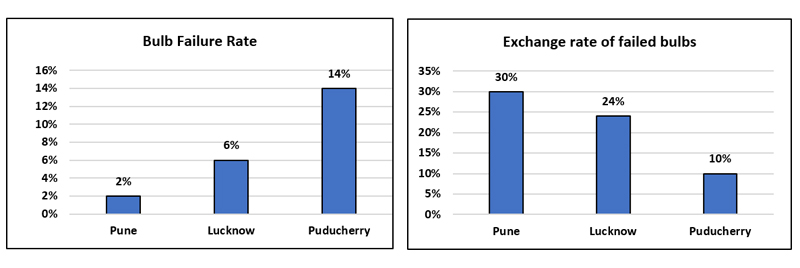
To conclude, UJALA has created a large and sustainable market for LED bulbs in India using the no-subsidy, bulk procurement model. Demand for LED bulbs has increased manifold and the retail market price (for the LED bulbs sold beyond UJALA) has dropped by a third. It has also created a significant awareness about LED bulbs, further contributing to increasing demand. Going ahead, EESL can ensure stricter monitoring and evaluation of the programme. It can also focus on low income households and small commercial establishments who are still buying incandescent bulbs. We focus on this aspect of LED use in low income households in the next post.
This piece is authored by Aditya Chunekar and Sanjana Mulay from Prayas (Energy Group).
This blog series is also available on the Prayas website here.
This article was republished in Eklavya Magazine in Hindi under ‘स्रोत विज्ञान एवं टेक्नॉलॉजी फीचर्स’, and can be accessed here.
To subscribe to email updates on the series, click here.
Other posts in this series:







